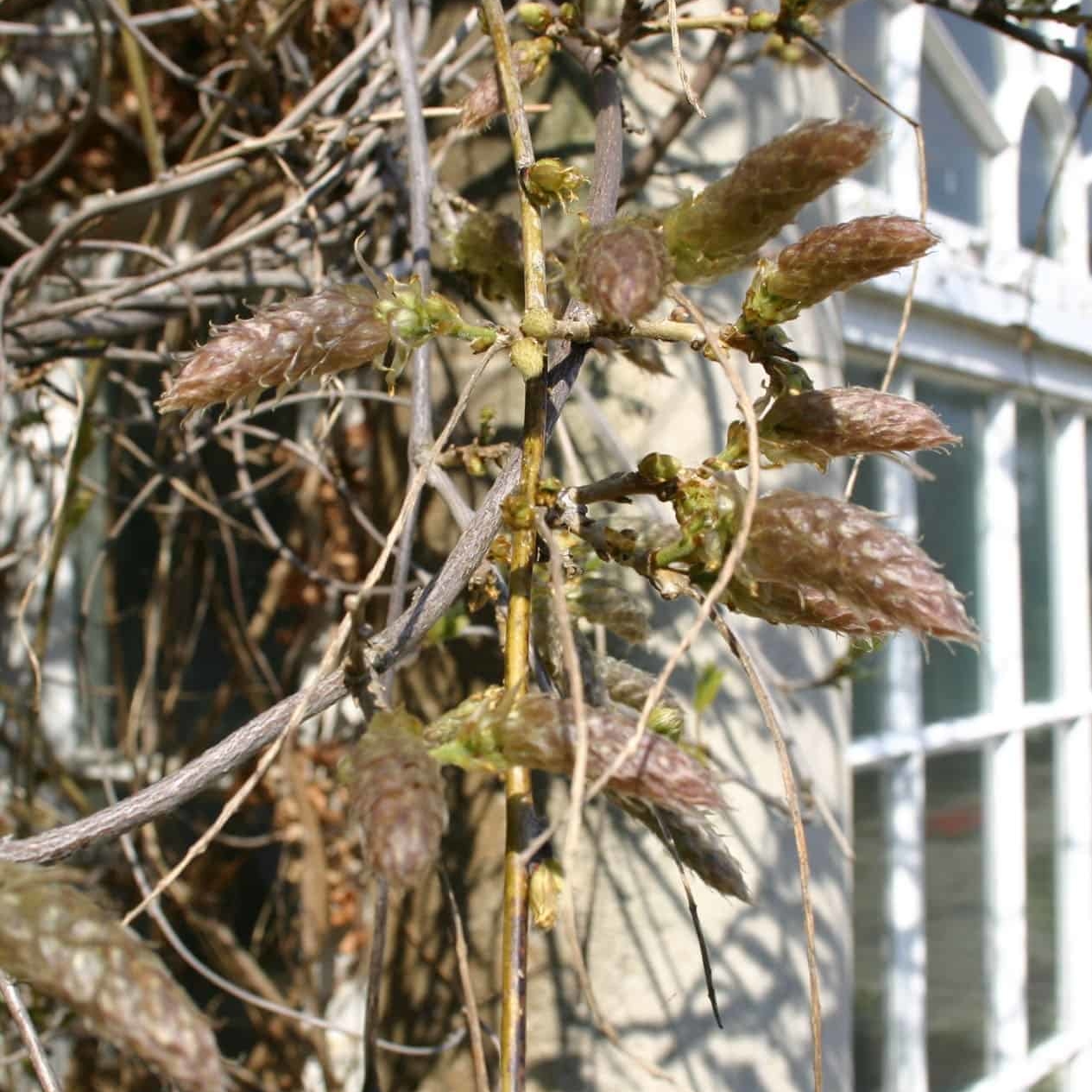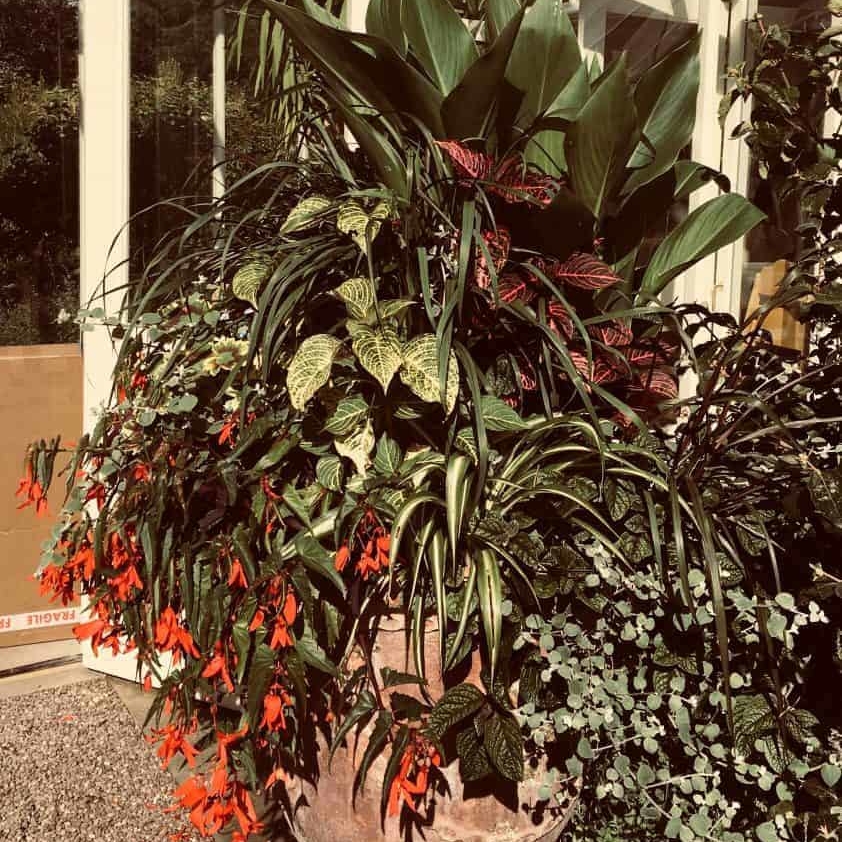Trees add a vital element to a garden, no matter the size of the specimen. They’re often the first thing considered when re-designing a garden; many of us have existing trees we don’t wish to remove. Where this isn’t the case, they add a focal point for the garden. The species to be planted is usually assessed for multiple merits such as foliage, blossom, fruit or bark texture and colour. They’re the bare bones of any natural landscape and as such need to captivate through 12 months of the year.
There are other significant factors to consider when it comes to designing around trees however. First and foremost is whether existing specimens are protected: do they hold a Tree Preservation Order (TPO).
All for one and one for all
TPOs do not exist primarily to serve the tree, nor its owner (who must, nonetheless, maintain it to the best of their abilities). They are in fact in place for the amenity of all who may encounter them. They’re brought into force by the local authority, either off their own bat or at the request of someone else.
These orders can cover single trees, small groups or entire woodlands. TPOs don’t cover hedges, but should a hedge contain trees or be made up of hedging which has overgrown into a line of large trees, these can be protected.
The term “amenity” is undefined by law, so careful assessment is required when planning to put one into place. Several factors need to be considered beforehand, such as:
- The tree’s visibility from public spaces
- Its size and form
- Its future potential
- Whether the tree has rare, historical or cultural value
- Its contribution to the landscape, a conservation area, the conservation of other flora and fauna, and its effect on climate change
The local authority can also vary or revoke an existent TPO. This may occur in instances where land is being developed, the tree originally covered has for some reason been removed, or where the original order map is deemed unreliable, amongst other factors.
A TPO comes into effect on the day the authority creates it provisionally. It lasts for a maximum of six months, unless the authority decides to either confirm it in the long-term or to reject the proposal.
Proposing works on TPOs
As the owner of a preserved tree, one has to seek permission from the local authority before making any changes. The application form can be found on the Planning Portal or via the local authority. Even diseased or dying trees require prior permission from the authority, unless exemptions exist, such as there being danger of imminent serious injury to persons or damage to property. Combatting serious plant disease is another exemption.
Fruit trees with TPOs also hold exemptions if they’re cultivated for business reasons, such as sale of their fruit, or if their harvest will be enjoyed privately so long as good horticultural practice is adhered to by the owner.
It can be a good idea to invite the local authority to carry out a site visit before formally submitting work proposals on a TPO site.
Also bear in mind that consent to work can be granted with conditions; these can include planting of replacement trees, regulation of the standard of work, or amendments to the usual time limit on when the work can happen (normally there is a 2-year window).
Anyone altering or destroying a protected tree or group of trees without permission from the local authority is guilty of an offence and may be fined several thousand pounds. Any tree unlawfully removed carries with it a duty to replace it. Such a responsibility passes over to a new owner, should the offender move home before replacing the tree him-/herself.
In most instances, the landowner has to plant a replacement tree ‘of an appropriate size and species at the same place as soon as he or she reasonably can’ (https://www.woodlandtrust.org.uk/get-involved/campaign-with-us/in-your-community/tree-preservation-orders/).
Other important considerations
TPOs are all well and good as initial legal factors to be aware of as a landowner. But what about beyond the law? Trees and hedges don’t carry building regulations as such, as long as they do not constitute a “nuisance” to neighbours (i.e. blocking out their light) or impinge on their own property by crossing boundary lines, all as part of the Anti-Social Behaviour Act 2003.
It’s essential to consider the impact of a tree’s planned position when planting a new one. The Planning Portal points out that some species of tree ‘can affect foundations over 20 metres away’. A book recommended on one website which clearly lists the potential spread of tree roots is ‘Tree Roots and Buildings’ by Cutler and Richardson. It’s well worth looking into should you be particularly concerned about the effects planting a new tree might have.
There are three main ways that trees can adversely affect a property:
- Damage to structures caused by subsidence, most hazardous for properties built before 1950 due to their shallower foundations.
- Damage to drains, where roots find a way in and block them; unmanaged watertight drains are generally never impacted.
- Damage to roofs and guttering due to moving or falling branches, or to paving and lighter structures from suckers and growing roots.
A phenomenon known as seasonal soil moisture deficit causes the most damage structurally. Soil underneath buildings contracts as tree roots take up water during drier months. It’s worth bearing in mind though that before we “resolve” this problem through removal of a tree, such an act can lead to the opposite effect. This is heave, whereby the soil re-wets, rises up (particularly upon freezing), and lifts structures anyway. Mature oaks, elms and ashes, to name just three, can draw up to 50,000 litres of water a year from surrounding ground.
Lists of trees by how much water they demand can be found. For example, Corylus, Liquidambar, Magnolia and Pinus demand less water, while Eucalyptus, Quercus, Salix and Cupressus are the contrary. Large wall shrubs such as Pyracantha and Wisteria can cause localised subsidence to structures too.
It’s said that crown reduction of a tree of around 70% volume (about 35% of its height) can reduce movement and water withdrawal. That said, other sources state that this is a barely effective procedure, only working in the first year. After then the pruning causes more side branching, larger and more numerous leaves, and even greater water uptake. Should crown reduction be employed, it needs to be performed on a three-year basis.
The RHS recommends anyone in possession a substantial tree have this professionally surveyed every few years to keep an eye on its health and any necessary work to maintain it and minimise risks.
Patios and paving should not be performed within a 1m radius of a tree trunk. This is for the benefit of the tree and the preservation of the groundwork. This is the area where most surface lifting takes place, especially with species such as Prunus with a large proportion of roots near to the soil surface. Between 80 and 90% of all tree roots develop within the top 600mm of soil. 99% or so of a tree’s total root length is within the upper 1m.
What about my neighbours?
Are you concerned about the influence a neighbour can have over your trees? As long as they’re not creating a nuisance, as mentioned above, there’s very little a neighbour can actually do. They can’t make you reduce the height of a tree, and they can’t force you to reduce or remove specimens due to perceived damage to their own property because of their presence.
If they believe one or more of your trees are causing structural damage, neighbours must firstly inform their building insurers. The company will investigate to find the cause for themselves. Should your trees be to blame, only then can they inform you of which remedial measures are necessary.
Seeing the wood for the trees
All in all, there aren’t many significant legal considerations surrounding use of trees on a property. As with most things in garden design, it’s common sense on the whole, with a good dash of morality.
The most significant consideration of all is that around the world, trees are being lost at a rate of knots. They provide us with shade, shelter and oxygen. They gave us fossil fuels which are replenishable after only thousands of years. They offer sanctuary and home to birds, insects and a multitude of mammals.
And yet even our local councils are playing it too safe, worrying excessively about lawsuits and payouts from uncommon instances of structural damage, and chopping down trees on street after street, where they should be preserving and replanting.
What can we do? As garden designers, continue seeing trees for the many merits they hold. As garden owners, plant them and care for them as best we can. As people, encourage our friends, loved ones and neighbours to plant their own.
Sources & further reading
- ‘The distance at which trees can affect buildings is quite significant’, The Architects’ Journal, https://www.architectsjournal.co.uk/home/the-distance-at-which-trees-can-affect-a-building-is-quite-significant/130858.article
- ‘Trees and hedges: Planning permission’, Planning Portal, https://www.planningportal.co.uk/info/200130/common_projects/53/trees_and_hedges
- ‘Trees near buildings’, Royal Horticultural Society, https://www.rhs.org.uk/advice/profile?PID=225
- ‘Tree Preservation Orders and trees in conservation areas’, https://www.gov.uk/guidance/tree-preservation-orders-and-trees-in-conservation-areas#tree-preservation-orders–general
- ‘Tree Preservation Orders’, Royal Horticultural Society, https://www.rhs.org.uk/advice/profile?PID=213
- ‘Tree Preservation Orders’, Woodland Trust, https://www.woodlandtrust.org.uk/get-involved/campaign-with-us/in-your-community/tree-preservation-orders/
Kevin Gelder
Kevin joined Bestall & Co in late 2017 and brought a range of skills with him from a varied background. He gained a degree in French and Italian from Lancaster University in 2009 before successfully completing a PGCE at the University of Sheffield in 2011. He built on his communication skills through secondary language teaching, before working in healthcare administration.
Ultimately though it was his passion for plants and gardening which brought him to Bestall & Co as a member of the planting team, and although he's now moved back to an office based role, the articles he wrote whilst he was still with us live on.



